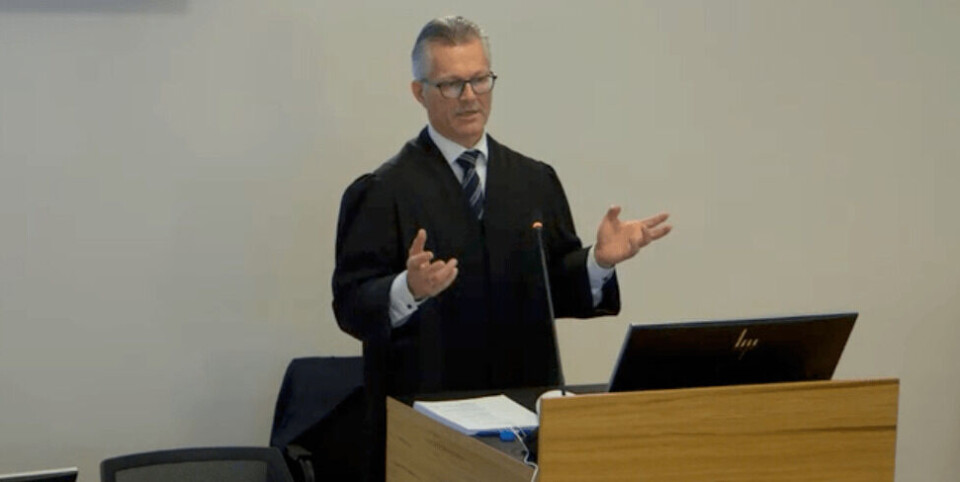
Norway: Fish farmers go to court to fight biomass cut
Salmon and trout farmers in one of Norway’s “traffic light” aquaculture areas have begun a legal fight against an order to reduce fish production.
All 25 companies who farm in production area 4 will try to convince Sogn og Fjordane District Court that the Norwegian Fisheries Directorate (NFD) – part of the Ministry of Trade and Industry - made a mistake when it put a red traffic light rating on the area last year, and that the decision was based on a poor foundation. A red light indicates that farmers can utilise only 94% of their biomass licences, which in production area 4 equates to an estimated reduction of 9-12,000 tonnes per year.
Trond Hatland, lawyer and partner in the law firm Thommessen AS, is leading the case for the farming companies, which include Mowi and Scottish Sea Farms co-owner Lerøy.
Decision ‘not fact-based’
Hatland previously told Fish Farming Expert’s Norwegian sister site, Kyst.no: “NFD’s decision was not fact-based or scientifically justified. It was not documented “necessary from the point of view of the environment” to make a decision on down-regulation of maximum permitted biomass (MTB).
“Strict requirements are set for the legal basis, case processing and factual basis for making such an intrusive decision. The decision affects not only the farmers, but also the local communities and municipalities.”
The farmers’ case is based on the fact that production area regulations state that the impact of salmon lice on wild salmonids is an environmental indicator and that the Ministry of Trade must assess whether the environmental impact in a production area is acceptable, moderate or unacceptable.
Wild salmon population ‘increasing’
Regulations state that in order for the environmental impact to be labelled as “unacceptable” and lead to decisions on down-regulation of MTB utilisation (a red traffic light), it must be proven that more than 30% of the wild salmon population in the production area dies as a result of lice infection caused by lice from farming.
“The decision to downgrade MTB utilisation is not based on a documented factual basis, but on hypotheses. The state has not proven that salmon lice produced in farming are stock-regulating for wild salmon,” the farmers’ state in their submission to the court.
In fact, wild salmon populations in production area 4 are increasing, they point out.
Moderate impact
“In any case, the state has not proven that more than 30% of the wild salmon population dies as a result of salmon lice from farming. That the hypotheses that formed the basis for the traffic lighting on 4 February 2020 were not sustainable is illustrated by the assessment in 2020, which states that the environmental impact in 2020 is moderate,” they write.
This alleged absence of a scientific basis for downgrading violates the legislator’s assumptions for the traffic light system, they believe.
“An explanation behind the state’s mistakes is not only a lack of investigation and factual basis, but also a lack of (opportunity for) contradiction. The state failed to give the farmers advance notice, access and the right to a hearing before the red light was turned on,” their submission states.
No consultation
They point out that the basis for the red light was also not sent for consultation.
“Had the breeders had the opportunity to point out the errors in the material presented on 4 February 2020, it would have been clear that there was no basis for a red light in production area 4.
“The absence of predictability also violates the legislator’s assumptions for the traffic light system. After denying the farmers right to reply before the red light was turned on, the state is also trying to restrict the farmers’ access to court proceedings. There is no basis for this,” they write.
Ex-ministers summoned
Hatland emphasised that farmers are not opposed to a predictable and sustainable system for growth.
“The lawsuit is not an attack on the traffic light system as such, but is aimed at what we consider to be an unfounded and incorrect decision to reduce production area 4.”
Ten days have been set aside for the court case, in which a number of witnesses have been called by the farmers and by the state. These include former fisheries ministers Harald Tom Nesvik and Geir Inge Sivertsen, and experts from research institutions and universities.






















































